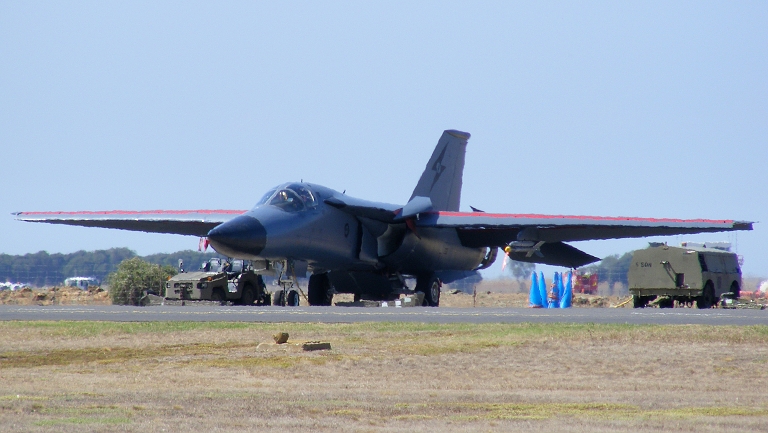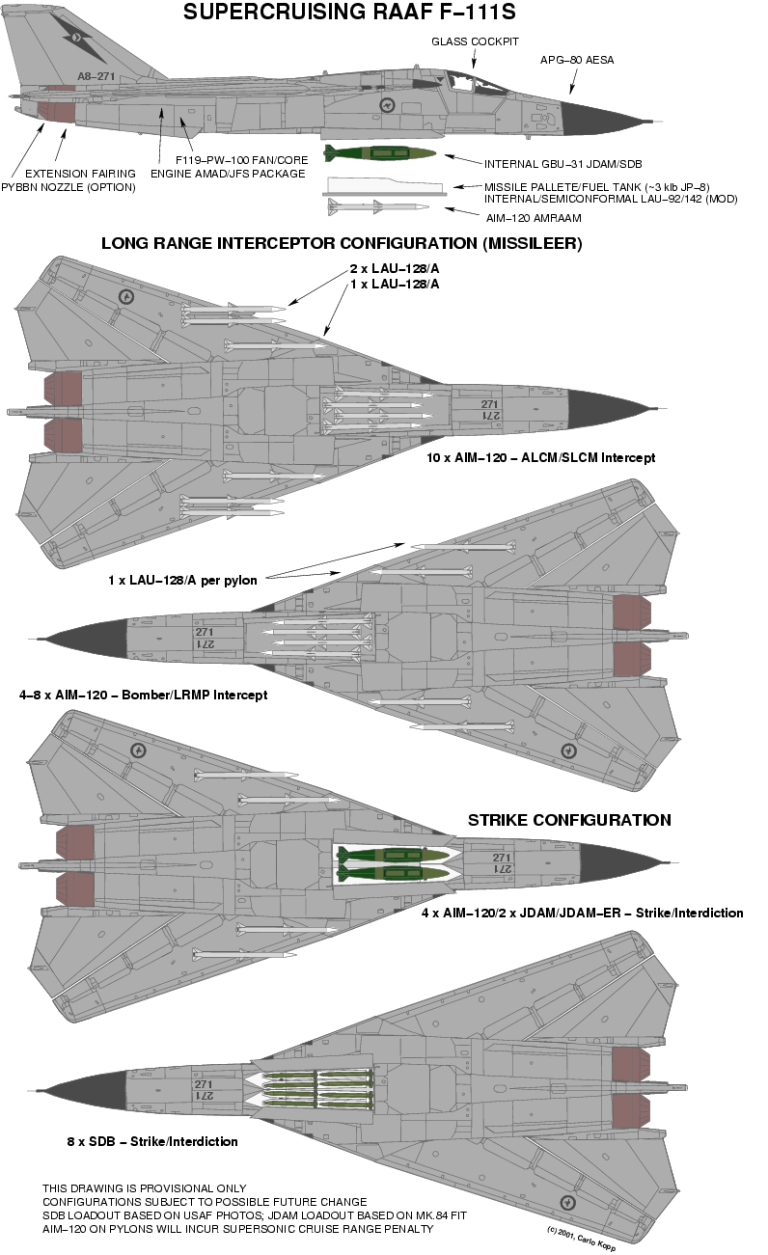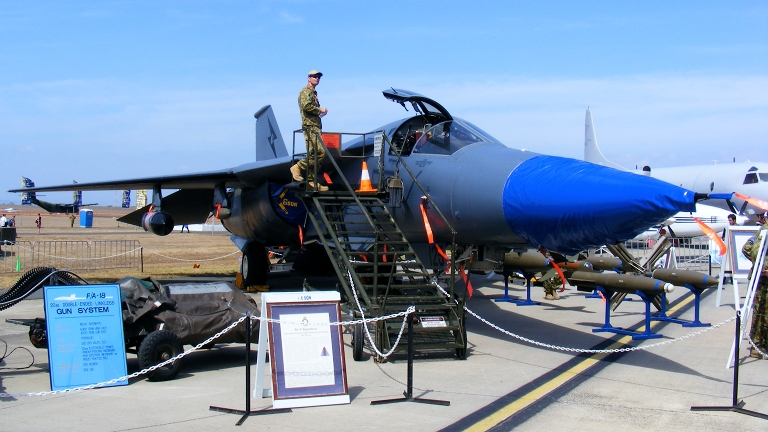|
||||||||||||||||||||||
![Home - Air Power Australia Website [Click for more ...]](APA/APA-Title-NOTAM.png) |
||||||||||||||||||||||
![Sukhoi PAK-FA and Flanker Index Page [Click for more ...]](APA/flanker.png) |
![F-35 Joint Strike Fighter Index Page [Click for more ...]](APA/jsf.png) |
![Weapons Technology Index Page [Click for more ...]](APA/weps.png) |
![News and Media Related Material Index Page [Click for more ...]](APA/media.png) |
|||||||||||||||||||
![Surface to Air Missile Systems / Integrated Air Defence Systems Index Page [Click for more ...]](APA/sams-iads.png) |
![Ballistic Missiles and Missile Defence Page [Click for more ...]](APA/msls-bmd.png) |
![Air Power and National Military Strategy Index Page [Click for more ...]](APA/strategy.png) |
![Military Aviation Historical Topics Index Page [Click for more ...]](APA/history.png)
|
![Intelligence, Surveillance and Reconnaissance and Network Centric Warfare Index Page [Click for more ...]](APA/isr-ncw.png) |
![Information Warfare / Operations and Electronic Warfare Index Page [Click for more ...]](APA/iw.png) |
![Systems and Basic Technology Index Page [Click for more ...]](APA/technology.png) |
![Related Links Index Page [Click for more ...]](APA/links.png) |
|||||||||||||||
![Homepage of Australia's First Online Journal Covering Air Power Issues (ISSN 1832-2433) [Click for more ...]](APA/apa-analyses.png) |
|
|||||||||||||||||||||
| Last Updated: Mon Jan 27 11:18:09 UTC 2014 | ||||||||||||||||||||||
|
||||||||||||||||||||||
|
||||||||||||||||||||||
![Home - Air Power Australia Website [Click for more ...]](APA/APA-Title-NOTAM.png) |
||||||||||||||||||||||
![Sukhoi PAK-FA and Flanker Index Page [Click for more ...]](APA/flanker.png) |
![F-35 Joint Strike Fighter Index Page [Click for more ...]](APA/jsf.png) |
![Weapons Technology Index Page [Click for more ...]](APA/weps.png) |
![News and Media Related Material Index Page [Click for more ...]](APA/media.png) |
|||||||||||||||||||
![Surface to Air Missile Systems / Integrated Air Defence Systems Index Page [Click for more ...]](APA/sams-iads.png) |
![Ballistic Missiles and Missile Defence Page [Click for more ...]](APA/msls-bmd.png) |
![Air Power and National Military Strategy Index Page [Click for more ...]](APA/strategy.png) |
![Military Aviation Historical Topics Index Page [Click for more ...]](APA/history.png)
|
![Intelligence, Surveillance and Reconnaissance and Network Centric Warfare Index Page [Click for more ...]](APA/isr-ncw.png) |
![Information Warfare / Operations and Electronic Warfare Index Page [Click for more ...]](APA/iw.png) |
![Systems and Basic Technology Index Page [Click for more ...]](APA/technology.png) |
![Related Links Index Page [Click for more ...]](APA/links.png) |
|||||||||||||||
![Homepage of Australia's First Online Journal Covering Air Power Issues (ISSN 1832-2433) [Click for more ...]](APA/apa-analyses.png) |
|
|||||||||||||||||||||
| Last Updated: Mon Jan 27 11:18:09 UTC 2014 | ||||||||||||||||||||||
|
||||||||||||||||||||||
F-111: Deadly
Strike-Fighter to be Trashed
|
||||||||||||||||||||||||
|
Air Power
Australia - Australia's Independent Defence Think Tank
|
||||||||||||||||||||||||
| Air Power Australia NOTAM 4th October, 2010 © 2010 C. L. Mills |
||||||||||||||||||||||||
|
||||||||||||||||||||||||
|
||||||||||||||||||||||||
 RAAF F-111C at Avalon in 2009 (© 2009 Carlo Kopp). |
||||||||||||||||||||||||
| ‘Mr
President, continental America has been attacked.’ The
Chairman, Joint Chiefs of Staff’s face is grim. ‘Land Attack
Cruise Missiles have struck US Naval Base Kitsap. The target was
Bangor, our nuclear submarine base. We are still gathering reports,
but at this stage we assess that two docked submarines have been
severely damaged, we believe nuclear fuel assembly buildings have
been breached with a high probability of release of nuclear material,
and several buildings have been hit.’ The year is 2018, but in an alternate universe where Australia drew 25 F-111s from the AMARC and using its F-111 development skills and experience, rebuilt its existing fleet to deliver 50 F-111s in a common configuration, thoroughly modernising these aircraft at a project cost of $1B and a cost of about $20M per aircraft. The upgrade included modern AESA-based radar, a comprehensive communications suite, signature reduction, a full self protection suite and fuel efficient F110-GE-132 engines, substantially increasing range, payload, speed and endurance. To increase the F-111’s offensive fighter capability, a weapons bay tank has been developed with four conformal AIM-120 launchers on the external surface. |
||||||||||||||||||||||||
 |
||||||||||||||||||||||||
|
||||||||||||||||||||||||
But back to the scenario. Time is 04:00 Pacific Standard Time. A rusty tramp steamer with four weathered 40 foot containers cruises 35 nmi off the west coat of the USA, some 100 nmi south-west of the USN Base Kitsap. Two nuclear submarines are tied-up, along with a third in dry-dock. The top of the containers open, revealing a shiny-new interior with four Novator 3M54TE series Klub cruise missile launchers erecting to the vertical. In less than a minute, the missiles are sequentially boosted vertically from their launch tubes, turn over and extend their flying surfaces and descend to a low altitude guided by the recommissioned GLONASS, supplemented by GPS and Galileo Satnav signals. Of the 16 missiles, eight are 3M54TE1s with a 400 kg warhead and eight are rocket boosted 3M54TEs with a 200 kg warhead, this time launched as a supersonic dart, manoeuvring and arriving at Mach 2.9. Radar terminal guidance and target scene matching correlation assist each missile to find its target. After launch, the tramp steamer is scuttled in the deep waters off the west cost of the USA, leaving only an oil slick behind. The crew transfer to a waiting fishing boat and quietly disappear. The President immediately calls a council-of-war. The findings are at best frustrating, and at worst, are of grave concern to the USA’s future security. These weapons, to misquote Mao Tse-Tung, are ‘like the guerrilla which moves amongst the people as a fish swims in the sea.’ Finding a Klub-K container amongst a world-wide sea of containers is close to impossible. The military advice is to mount barrier-caps (BARCAP) to intercept the incoming missiles after launch until a better solution can be found. However, this is an expensive option, and operations modelling reveals that all of the USA’s AWACS, the AESA equipped remaining F-22A, the handful of AESA equipped F-15 fighter aircraft and a large portion of USN Ships and AESA Block II Super Hornet fleet will be needed to protect the east and west coasts, but that there will still be large gaps, a shortfall in the number of airborne missiles required to destroy all incoming Klubs, and ‘leakages’ from swarm attacks. Even the southern border is vulnerable to Klub-K attacks from truck-borne weapons. A LtCol USAF pilot and staff analyst remembers that the RAAF has upgraded 50 F-111s. His grandfather flew the F-111A models and regaled him with stories of the legendary capabilities of the aircraft. He suggests that the RAAF aircraft could also be used as barrier-cap, assets each carrying 16 AIM-120C6 missiles optimised to intercept low-flying cruise missiles. The endurance would be about eight hours on station, and they could position to a firing zone at speeds in excess of Mach 2. He advised that the track-while-scan radar could track 40 missiles and engage them in blocks of eight. The President is impressed. ‘Get me the Prime Minister of Australia on the phone please’, he asks. Five minutes later, the Prime Minister and the President are in earnest conversation. ‘We can deploy the F-111s to the USA in about two days’, the Prime Minister advises, ‘they have the range and don’t need tanker support.’ The President asks for them to deploy to the Nellis AFB in Nevada, where they will receive full support from the USAF. Three days later, RAAF Pilot Mark and WSO Angus are patrolling in their F-111 at 36,000 feet on a figure-of-eight around at CAP Alpha, 60 nmi North-West of San Diego. Their Wingman is stationed at CAP Charlie, South-West. These CAP stations give them the greatest chance of an intercept of the 120 nmi range 3M54TEs and the 160 nmi range of the 3M54TE1s. Their mission is to protect the target-rich San Diego area naval installations. Intelligence based on the previous attack is that the terrorists prefer naval installations as targets – probably because they are on the coast and within the sea-launched Klub-K range. Over five hours of the Combat-Air-Patrol, they chat and comment that BARCAP is probably the most boring mission on earth. With the F-111s' wings spread and operating at the optimum altitude and speed for endurance, the dash 132s sip fuel and so the aircraft don’t need frequent air-to-air refuelling. The crew’s boredom is rudely interrupted with a klaxon alert. The large plasma screens in front the pilot and WSO light up a warning, and show a growing number of tracks emerging from a large ship 110 nmi from San Diego. A label shows it is a US Registered Offshore Supply Vessel, with its manifest listing containerised cargo to support the Alaskan Oil Fields. Four Containers are loaded, so the F-111 crew expect up to 16 Klubs to emerge. Their wingman, another RAAF F-111, on patrol to the South, is sharing the tactical display, and can bring another 16 AIM-120C6s to the engagement. The WSOs’ exchange data over the tactical data link while the pilots engage full afterburner and break-turn to move the pair of F-111s onto a beam-intercept course. They know that they will have less than 12 minutes to destroy the incoming Klubs before they release supersonic, manoeuvring darts. In a few minutes, the F-111 crews can see the sea-skimming Klubs on their AESA radar. Mission Captain Angus directs one AIM-120C6 for each incoming Klub, with each aircraft to ripple-fire eight missiles from the beam intercept. They expect the probability of kill to be in the order of 0.5 while the missiles are in sea-skimming mode, but virtually nil in the last 30 nmi if the Klubs release a supersonic dart. They start with the missiles closest to the coast, sort targets, and designate the firing sequence. Within minutes, the supersonic F-111s are in range, and with the WSOs working like cut-snakes, begin ripple-firing. Soon, 16 AIM-120C6 missiles are in the air, eight from each F-111, streaking at Mach 4 to the Klubs cruising at Mach 0.7, 50 feet off the ocean. The blizzard of missiles close, then engage. The AESA radar blooms as the missiles hit, but some Klubs emerge as expected. The F-111s have 16 missiles left. Of the 16 Klubs, nine survive, and the remainder are quickly sorted and reengaged, again with a single missile. The pilots keep up the Mach and closure, knowing that a stern intercept will need to be fired from at close at 10 nmi to be effective. The F-111 with its powerful F110-GE-132s and Mach 2.5 capability is easily up to the task and soon the two aircraft are line astern and closing on the surviving Klubs for a look-down shoot-down shot. WSO Angus takes the lead to engage the surviving lead Klubs, and orders his wingman to engage the trailers. Nine more AIM-120C6s streak out to the nine Klubs. Of these, five survive, two in the lead and three behind. WSO Angus knows time is running out, but with seven of the 32 AIM-120C6s remaining, he can increase the Pk with dual missile shots. ‘Fire pairs at the two leaders, and singles at the trailers’ he orders. As the missiles hit, the five Klubs now become a single lone-ranger. This survivor releases its dart which is engaged and destroyed close to San Diego by picket ships firing multiple ESSMs. The US Coast Guard find, intercept and board the Offshore Supply Vessel, only to find the crew had been hijacked and immobilised. The Klub crew again escaped, but this time the used Klub containers are captured as proof of the attack. More worrying is that further investigation shows that the Klub containers had been imported into the USA, and using forged documents, exchanged on the Offshore Supply Vessel in place of the legitimate cargo. |
||||||||||||||||||||||||
|
In this scenario, the F-111s acquit
themselves as being highly capable in comparison with existing
fighters. Here is the table for a Barrier-Cap mission:
|
||||||||||||||||||||||||
|
||||||||||||||||||||||||
|
But
there is more. The F-111’s ‘swing-wing’ gives it by far the
greatest endurance, so it does not require time-off-CAP for
air-to-air refuelling. It also is the equal-fastest of the fighters,
and has the capability to sweep its wings back and get to an engagement
range post-haste. In some scenarios, the aircraft with inferior
acceleration and Mach performance such as the F/A-18F and the F-35A,
simply won’t
catch the Klubs, or will catch some but leave most to the
dart-release range. The presence of a second crew station greatly
increases the probability of Klub kills, as the timing is ‘down to
the wire’ with multiple engagements required to complete the
destruction of the Klub swarm. The WSO will be fully occupied running
the attacks and the pilot fully occupied running the intercept.
Back to reality and truth. In recent Red Flag appearances, the F-111 has received accolades for its combat performance. The Royal Australian Air Force has numerically displaced its F-111 fleet with the F/A-18F Super Hornet, but has not replaced key operational capabilities on which Australia relies – range, payload, endurance, speed and tanker independent operations being examples. Australian F-111 engineers, with decades of experience on-type, advise that the aircraft is capable of another 4,000 to 6,000 hours of safe, unrestricted operation with standard maintenance and the already developed ageing aircraft practices applied, and this could be extended to 8,000 to 10,000 hours if some components are affordably remanufactured here in Australian, using known and well understood engineering practices. The moral of this story is that you can teach a pedigree hunter-killer new tricks, and produce a very cost-effective weapon that can make substantial contributions to modern and future warfare. For less than $20 million each the F-111s can be refurbished and upgraded to do the jobs that a new production $150M aircraft cannot. Survivable, lethal, supportable, maintainable, affordable. That has to be the bargain of the millennium. |
||||||||||||||||||||||||
|
APA Associate Editor's Notes: Current Defence planning will see the RAAF F-111 fleet ground up into scrap metal in coming months, or sold off as museum display pieces. The
F-22/Evolved F-111 Proposal would result in an air dominant air
combat capability for Australia that would cost somewhat less than
the Department's current plans to buy 100 F-35A JSF aircraft and less
than half what the Department's overall plans for the Bridging Air
Combat Capability (BACC) and New Air Combat Capability (NACC)
projects will cost, if implemented.
Recent
cost estimates by experts in Australian Industry and Academia show
that the RAAF F/RF-111C and F-111G aircraft, along with associated
spares, support equipment and Type Data (the information required for
the operation, maintenance and support of the aircraft type) could be
placed in effective preservation storage for over 5 years, in purpose
built facilities, for around 10 percent of the current price of one
(Qty 1) F-35A JSF CTOL aircraft.
That’s
around 0.1 percent of the currently estimated budget of the
Department’s plans to purchase JSF aircraft.
Given
the extreme levels of risk associated with the current air combat
capability plans of the Australia Department of Defence, many of
which have or are in the process of materialising, placing the F-111
fleet into recoverable storage would be prudent risk planning and
provide an appropriate risk hedge against what many experts in
the Defence community and Industry now regard to be the
bureaucratically driven aerospace industry equivalent of the Ponzi
Schemes that led to the Global Financial Crisis.
Ministerial Submission: Strategic Needs and Force Structure Analysis: The Thinking Behind the F-22A and Evolved F-111 Force Mix Option Defeating Cruise Missiles, Technical Report APA-TR-2007-0402 [2004-2007]  A8-125
on
display (© 2009
Carlo Kopp).
|
||||||||||||||||||||||||
|
|
||||||||||||||||||||||||
| Air
Power
Australia
Website - http://www.ausairpower.net/ Air Power Australia Research and Analysis - http://www.ausairpower.net/research.html |
||||||||||||||||||||||||
 |
||||||||||||||||||||||||
| |
||||||||||||||||||||||||
|
|||||||||||||
![Sukhoi PAK-FA and Flanker Index Page [Click for more ...]](APA/flanker.png) |
![F-35 Joint Strike Fighter Index Page [Click for more ...]](APA/jsf.png) |
![Weapons Technology Index Page [Click for more ...]](APA/weps.png) |
![News and Media Related Material Index Page [Click for more ...]](APA/media.png) |
||||||||||
![Surface to Air Missile Systems / Integrated Air Defence Systems Index Page [Click for more ...]](APA/sams-iads.png) |
![Ballistic Missiles and Missile Defence Page [Click for more ...]](APA/msls-bmd.png) |
![Air Power and National Military Strategy Index Page [Click for more ...]](APA/strategy.png) |
![Military Aviation Historical Topics Index Page [Click for more ...]](APA/history.png)
|
![Information Warfare / Operations and Electronic Warfare Index Page [Click for more ...]](APA/iw.png) |
![Systems and Basic Technology Index Page [Click for more ...]](APA/technology.png) |
![Related Links Index Page [Click for more ...]](APA/links.png) |
|||||||
![Homepage of Australia's First Online Journal Covering Air Power Issues (ISSN 1832-2433) [Click for more ...]](APA/apa-analyses.png) |
|||||||||||||
| Artwork, graphic design, layout and text © 2004 - 2014 Carlo Kopp; Text © 2004 - 2014 Peter Goon; All rights reserved. Recommended browsers. Contact webmaster. Site navigation hints. Current hot topics. | |||||||||||||
|
Site Update
Status:
$Revision: 1.753 $
Site History: Notices
and
Updates / NLA Pandora Archive
|
|||||||||||||
|
|
Tweet | Follow @APA_Updates | |||||||||||
|
|
|||||||||||||
|
|
|||||||||||||